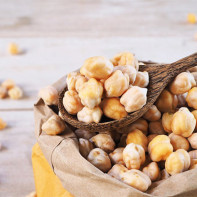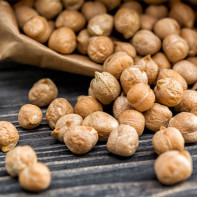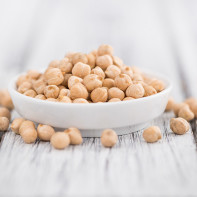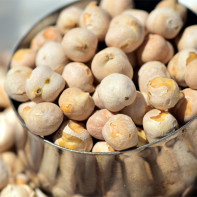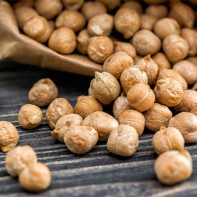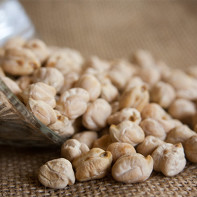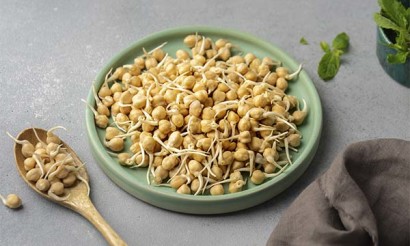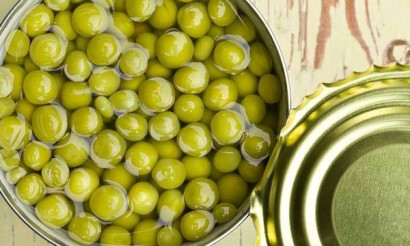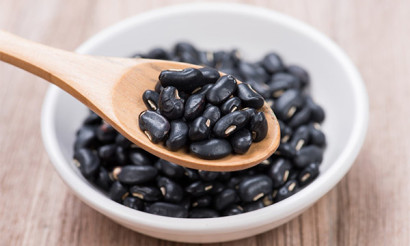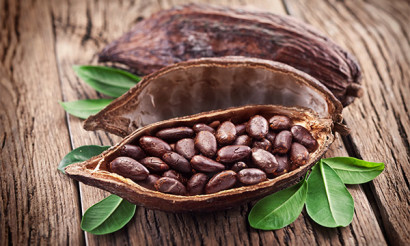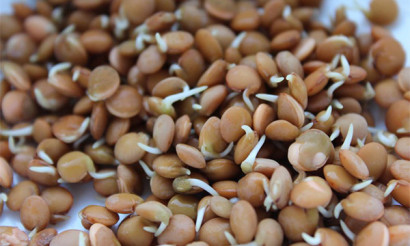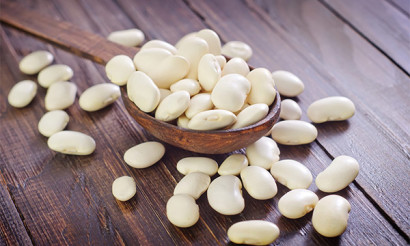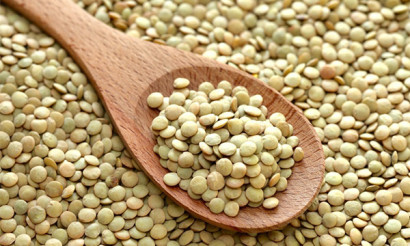Chickpeas (chickpeas): composition, useful properties, how to cook them
Chickpeas (chickpeas) is a plant from the legume family. It is grown in many parts of the world, but it is most popular in the Mediterranean and the Middle East.
- What are chickpeas
- What is the difference between chickpeas and peas
- Composition and calories
- Useful properties of chickpeas
- General benefits
- For Women
- For Men
- For Children
- When losing weight
- Can chickpeas be used by pregnant and nursing women
- Chickpeas in medicine
- For Diabetes
- For pancreatitis
- For Gastritis
- Chickpea-based folk medicine recipes
- Chickpeas in Cosmetology
- The benefits and harms of sprouted chickpeas
- What can be cooked of chickpeas: Recipes
- Pork Chops with Chickpea
- Chickpea and Harissa Soup
- How to Choose and Store Chickpeas
- Harms and contraindications
- Side Effects
- Interesting facts about chickpeas
What are chickpeas
Sometimes chickpeas are confused with nuts or peas, as their seeds are very similar. That's why it is sometimes called the Italian pea. They come from West Asia and are an important element of Arab cuisine.
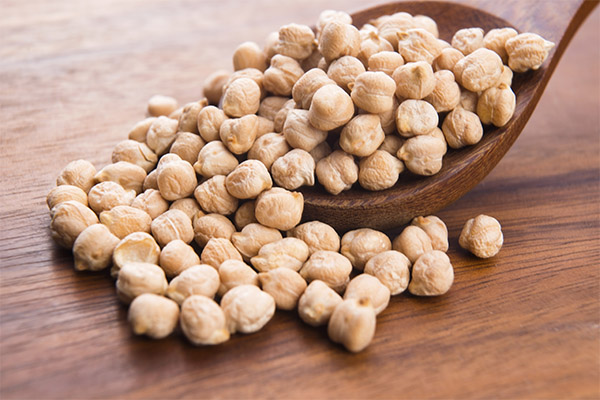
There are two main varieties of chickpeas: Kabuli and Desi. The Kabuli variety is more common in European cuisine, it has a creamy yellow color, with rather large grains. Arabs are more appreciative of the Desi variety, which has darker and slightly smaller grains.
What is the difference between chickpeas and peas
Since chickpeas and peas belong to the legume family, sometimes they are not so easy to distinguish, but still they each have their own characteristics. The first thing to look at is the shape of the beans. Chickpeas have rounded beans as opposed to oblong peas. It is also worth noting that peas tend to have a large number of green peas, while chickpeas have an average of 2-3 yellow seeds in the bean. Chickpeas are rich in protein, carbohydrates and contain a fairly high percentage of fat. Peas, on the other hand, contain few proteins and carbohydrates and a small percentage of fat. Chickpeas grow well in warm climates - peas can grow normally in temperate latitudes as well.
Composition and calories
Chickpeas are an excellent source of fat, protein, carbohydrates, fiber, sugars, and minerals. They also contain zinc, phosphorus, magnesium, manganese, copper, potassium, sodium, calcium, iron, folic acid and vitamins A, B (B1, B2, B3, B5, B6 and B9), C, E and K.
This combination of mineral and vitamin compounds has a positive effect on the circulatory system. Iron and folic acid protect against anemia, and vitamin K regulates blood clotting, which is important not only in wound healing, but also during heavy menstruation. Potassium is an essential electrolyte that normalizes blood pressure. Chickpeas can also be found high in fiber, which not only supports weight loss and fat burning, but is also important in preventing cardiovascular disease.
Useful properties of chickpeas
General benefits
List of useful properties of chickpeas:
- Promotes good sleep. Chickpeas are rich in amino acids, tryptophan and serotonin, which play an important role in regulating mood and sleep. Consumption of this bean promotes a calmer person and a good emotional state.
- It strengthens the immune system. Chickpeas are rich in "good" iron, which helps transport oxygen throughout the body and is essential for maintaining the immune system and normal metabolism.
- It provides the body with the "right" energy. Chickpeas, like all legumes, contain complex carbohydrates, which tend to be quite slow to digest and convert into energy. As we know, there are two types of carbohydrates: simple and complex. Simple (fast) carbohydrates contribute to a spike in sugar levels. While complex (slow) ones do the opposite, as they provide the body with energy gradually. In addition, chickpeas can be consumed while following a low-calorie diet. Even a small portion of chickpeas can provide the body with a daily amount of carbohydrates. In this case, glucose enters the blood gradually unlike simple sugars contained in processed foods, which can cause blood sugar spikes.
- It improves digestion. Chickpeas are one of the foods with a high fiber content (about 6 to 7 grams per half cup). Unfortunately, modern diets contribute to a deficiency of this substance. Meanwhile, fiber helps digestion by moving food through the digestive tract, preventing IBS symptoms and constipation. Fiber is able to draw fluid out of the body, binding it to much of the resulting stool, which contains toxins and waste that must be removed from the body. Fiber also helps balance the pH and number of bacteria in the gut, increasing the number of beneficial ones while decreasing the number of harmful ones. An imbalance of gut flora is often associated with many digestive problems.
- Improves heart health. The presence of soluble fiber, antioxidants and polyunsaturated fats make chickpeas a valuable food for heart health. Moderate daily consumption of this bean has been found to lower LDL cholesterol, triglycerides and total cholesterol within one month.
- Cancer Protection. The substances in these beans have protective properties that help prevent colorectal cancer. In studies on mice, beans have also been shown to stop the formation of cancer cells. Because beans act as a defense for the digestive system against harmful bacteria and the accumulation of toxic substances, they create a healthier environment with a balanced pH level, hence cancer cells cannot multiply in this environment.
- A source of plant protein. Beans are an excellent source of protein. It is known to be an important macronutrient that is involved in the functioning of vital organs, muscles, tissues and even affects hormones.
- It promotes cell regeneration. Chickpeas contain folate, which is a type of vitamin. This substance is directly involved in the creation of new cells.
For women

- Women's health. The phytochemicals found in beans are extremely useful for preventing cancer and osteoporosis. This product is also great for reducing the frequency of hot flashes after menopause.
- For facial skin. Manganese makes cells fight free radicals that provoke wrinkles. Molybdenum cleanses the skin by removing sulfites. Folate and vitamin B affect the skin's recovery processes after being exposed to the sun.
- Folic acid. Chickpeas contain large amounts of folate, which is considered an important nutrient for the expectant mother and fetus.
- It gives a feeling of fullness and helps with weight loss. The high protein and fiber content helps you feel full and control your appetite. Beans contain macronutrients that help control blood sugar levels and therefore maintain energy. Because chickpeas are low in calories, high in protein and fiber, they are an ideal food for those who need to lose weight.
For men
- Plant Protein. Chickpeas are high in plant protein, so regular consumption of this bean will help men who want to build muscle mass.
- Benefits for hair. These beans are excellent for strengthening the hair. It is recommended to regularly consume chickpeas for balding men, as this product contains a lot of protein and manganese, which help to prevent hair loss.
- Natural aphrodisiac. Since ancient times, chickpeas have been used as a means to increase potency. Today, this product can even replace medicines, but only if you consume infusions of raw beans regularly.
- It provides energy. Chickpeas can provide the body with a lot of energy, which is so necessary for every active man today.
For children.
Chickpeas can be eaten by children when they reach the age of eight months. However, many pediatricians recommend giving chickpeas to a child only after one and a half years. It is mandatory to grind chickpeas to a homogeneous consistency. Feed the child in small portions.
The benefits of chickpeas for children:
- General development. Chickpeas are an excellent source of protein, which is essential for building new cells, muscles, cartilage, blood, hormones and enzymes in a child. A growing baby needs plenty of protein.
- Brain development. Chickpeas contain small amounts of polyunsaturated fats. Unsaturated fats are essential for a child because they help with brain development, give energy, and soften the skin.
- Anemia prevention. Chickpeas are an excellent source of iron, which is an essential element for creating new red blood cells. If the body does not get the amount of iron it needs, it cannot create new red blood cells. This condition is called anemia. Chickpeas can help prevent children from developing this condition.
- It strengthens bones and muscles. Calcium is essential for growing bones and keeping teeth healthy. It also helps muscle tissue and the nervous system develop.
For weight loss.
Chickpeas are an excellent source of protein. This nutrient can help you lose weight because it has a high thermal effect of 30%, which means you can burn up to 30% of calories during digestion. Protein also helps you feel satiated, so there is less chance of overeating.
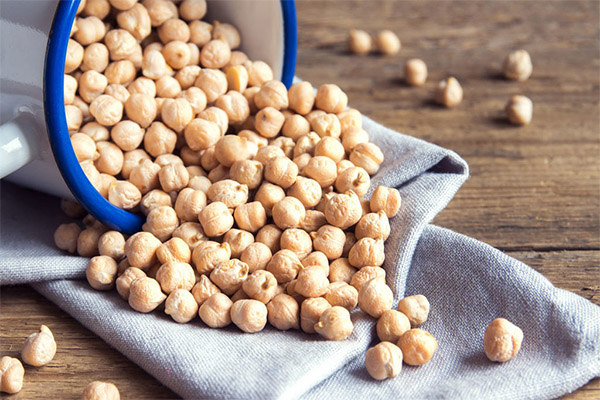
Chickpeas are rich in fiber, which affects body weight. Fiber has a satiating effect, which means that it also contributes to the feeling of satiety. It slows down the release of sugar from food into the bloodstream. By avoiding spikes in blood sugar levels, you can avoid feeling hungry.
Chickpeas are an excellent source of substances such as phosphorus, zinc, iron and folate. Eating foods rich in nutrients helps maintain energy levels while losing weight, so one will feel alert.
Can chickpeas be eaten by pregnant and nursing women?
Over the years, there have been several studies that have made it clear whether or not chickpeas can be consumed by pregnant and nursing women. Here's what the studies say:
- Pregnancy is a time when a woman tends to gain weight. Chickpeas are a good way to prevent obesity and stay healthy.
- Chickpeas reduce the risk of heart attack.
- Chickpeas increase energy levels during pregnancy.
- The need for nutrition increases during pregnancy because the fetus needs to be satiated. During this period, the body needs more proteins, vitamins, minerals and fiber. Just these substances are present in large quantities in chickpeas.
- Chickpeas are a rich source of iron and vitamin B6, which are very important for the development of the fetus.
- Chickpeas also contain choline, which is necessary for the maintenance and development of the brain and nervous system.
- One cup of chickpeas contains 65% of the daily allowance of manganese, important for meeting the growing needs of the fetus.
- Copper, zinc and selenium are natural antioxidants that play a crucial role in the health security of the fetus, as they can protect it from the effects of free radicals.
Chickpeas in medicine
The useful properties of chickpeas are very often used in medicine, so the product is shown to people:
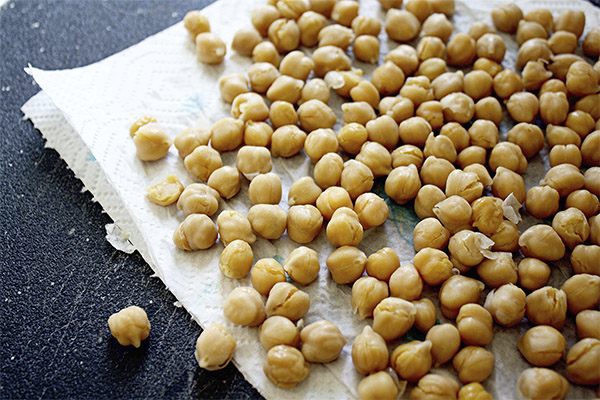
- As a prevention of the development of cataracts.
- To reduce the risk of strokes, heart attacks and disorders related to the cardiovascular system.
- To normalize blood pressure.
- To improve potency.
- For the prevention and dissolution of gallstones.
For Diabetes
There is a widespread belief that diabetics are not recommended to eat chickpeas because they have a very high carbohydrate content. This myth is easily refuted because chickpeas have a low glycemic index (35 units) and load. The carbohydrates in this product are digested so slowly that they do not cause blood glucose levels to rise as they do with bread, rice, potatoes, or pasta. This is why people with diabetes should eat chickpeas: they do not spike blood sugar levels, allowing them to control their overall condition.
For pancreatitis
As you know, beans are not recommended to eat people with such diseases, but this is not always the case. For example, if pancreatitis occurs in a fairly mild form, chickpeas can be included in the menu, but only in small quantities.
Since beans contain protein, which is necessary for the recovery processes, chickpeas will even be useful. For example, it can be used as an ingredient in vegetable soups or mashed potatoes. It is important that the beans are served grinded to the table.
Gastritis
Like all legumes, chickpeas contain a number of components that make it difficult to digest food. This means that it will stay in the stomach longer and is likely to cause abdominal pain and heaviness. Therefore, it is recommended to treat the product before consuming it. It is also worth paying attention to:
- People with gastritis or ulcers are advised to eat chickpeas in smaller quantities than usual.
- It is advisable to eat chickpeas shredded, as this way digestion will be better.
- If chickpeas are not ground enough, they may cause intestinal gas.
In case of severe or frequent discomfort when eating this product, it is recommended to consult a doctor.
Recipes of folk medicine based on chickpeas
Chickpeas are a legume product that is popular in folk medicine. Its value is due to its high content of minerals and vitamins. It is rich in fiber, proteins, fats. This crop is especially valued for its presence of selenium, which improves brain function, prolongs youth and inhibits the growth of abnormal cells.
Recipes:
- To cleanse the body of poisons and toxins pour 100 grams of peas with a glass of water, insist 8 hours. Then the water is drained and the chickpeas are beaten with a blender. The resulting porridge is eaten raw for a week, then make a similar break.
- When coughing and bronchitis prepare a decoction. Pour 2 liters of water over a glass of crushed beans. Boil for half an hour. Add a little butter to the finished remedy. Drink the drink during the day. Duration of use - until the relief of symptoms.
- When poisoning will help sprouted beans. They are poured in a thin layer in a small container and pour water. Refill the water daily, as the peas absorb it. In a couple of days there will be sprouts, of which make decoction. Pour 2 tablespoons of 0.5 liters of water, boil for a quarter of an hour. Decoction strain and drink.
- For the prevention of disease. Pour a glass of water over 100 grams of beans, leave for the night. By morning the peas will swell and become soft. They are eaten raw.
Chickpeas in cosmetology
In cosmetology, chickpeas also found their application. For example, chickpea flour is generally used to get rid of black spots on the face and to improve skin color. Ground grains of this bean act as a natural scrub. Such a composition is suitable for all skin types. In addition, chickpea masks can be used for acne, inflammation of the skin, as well as peeling.
The benefits and harms of sprouted chickpeas
Chickpeas, like most beans, contain anti-nutrients that can make digestion difficult. Sprouted chickpeas, on the other hand, improve gastrointestinal function and increase vitamin and protein content.
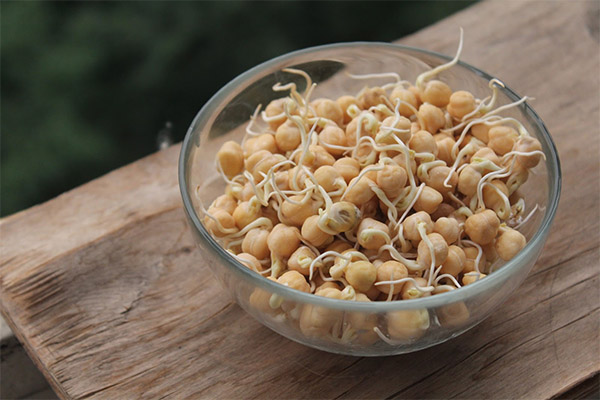
Useful properties of sprouted chickpeas:
- Beans are able to saturate the body with nutrients and can relieve hunger for a long time.
- B vitamins and fiber found in sprouted beans help speed up the metabolism and metabolic processes.
- Helps normalize blood sugar levels.
- Gives energy and lowers cholesterol levels.
Sprouted chickpeas are added to soups and made into porridges. It is better to consume at lunch time.
Harm
Despite the fact that chickpeas have many useful properties, its use can also cause harm. For example, if you are individually intolerant to sprouted beans, it is forbidden to add this product to the diet. Also, beans can cause excessive gas, so consumption should be moderate.
What you can make from chickpeas: recipes
Please note: chickpeas should be soaked for 8-12 hours before boiling.
Pork chops with chickpeas
Ingredients:
- olive oil;
- red onion - 1 pc;
- red wine vinegar - 2 tbsp;
- sugar - 1 teaspoon;
- chicken broth - 100 ml;
- chickpeas - 400 gr;
- parsley;
- Pork chops - 2 pcs.
How to cook:
- In a skillet add 1 tablespoon of olive oil and onions, salt well and cook it all until the onions are soft (about 10 minutes).
- Then add the vinegar and sugar and simmer for about 3 more minutes.
- Add pre-cooked chickpeas.
- Stir everything and add parsley. Whisk it with a blender together with other ingredients. You should get a homogeneous mass.
- Roast the mixture formed into a cutlet for 5-7 minutes on each side.
Chickpea and harissa soup
Ingredients:
- Onion - 1 pc;
- olive oil;
- carrots - 2 pcs. diced;
- celery - 2 pcs, diced;
- ground cumin - 0.5 teaspoon;
- harissa - 2 tablespoons;
- chickpeas - 400 gr;
- vegetable broth - 750 ml;
- tomato puree - 2 tablespoons;
- parsley.
How to cook:
- Fry the onion in a pan with 1 tablespoon of olive oil.
- Add carrots and celery to the broth. Cook for 5 minutes.
- Then add cumin and harissa and cook for another 1 minute.
- Add the rest of the ingredients, season and bring to the boil. Cook for 15 minutes.
- Just before serving, add the parsley.
How to choose and store chickpeas
Rules for selecting and storing chickpeas:
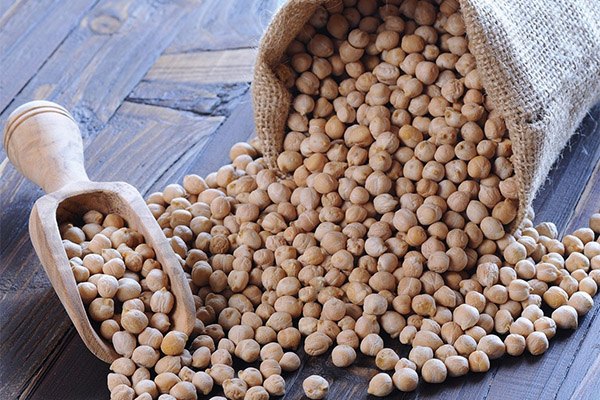
- When selecting the beans should be quite firm, clean and have the same color. Do not take the beans if they are shriveled, have a whitish patina.
- It is recommended to buy beans in raw form. They can easily be stored in an airtight container or plastic bag.
Organoleptic qualities of these beans, as well as all the useful properties, retain for a long time - for a year after harvesting.
Pre-cooked or roasted beans have a limited shelf life. In addition, frying worsens their nutritional value. It is recommended to store cooked chickpeas in the refrigerator for no more than 5 days.
Harm and contraindications
Contraindications:
- Chickpeas are not recommended for people in old age.
- Children or people with a weak digestive system can eat chickpeas only in small quantities and only in grinded form.
- People with bladder ulcers should also avoid chickpeas.
- With individual intolerance, it is recommended to give up the beans.
Side effects
Some people may experience stomach cramps and excessive gassiness after consuming chickpeas. Let's take a closer look at the reasons for this.
Gassiness
Legumes that are high in protein can provoke the production of intestinal gas. The degree of excessive gas production usually varies. It is advisable to eat chickpeas in small amounts, letting the metabolic processes get used to this food. Minor flatulence should not be a cause for concern, but if the level of gas is so great that it causes abdominal pain or discomfort, it is worth giving up the beans.
Allergies
People who are allergic to soybeans, lentils or even latex may be allergic to chickpeas. The reaction is most often manifested by a stuffy nose. Therefore, breathing problems may occur after consuming the beans.
Side effects may also occur such as:
- acne;
- runny nose;
- headache;
- Itchy skin.
Interesting facts about chickpeas
Some interesting facts about chickpeas:
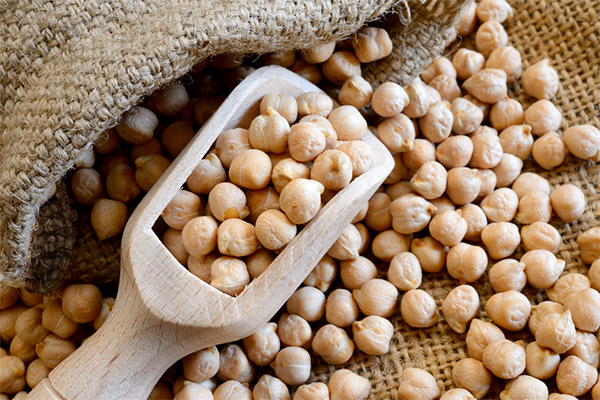
- Chickpeas have many different names around the world, such as tobacco beans, Bengali beans, Egyptian peas, sesi beans and kabuli chana.
- Chickpeas come in many varieties and colors. There are black, green, red, and brown chickpeas.
- Chickpeas are an excellent source of fiber and are great for maintaining a healthy digestive system. The dietary fiber in chickpeas can help you lose excess weight.
- Chickpeas are very versatile. You can find a huge number of recipes with chickpeas on the Internet.
- Ground chickpeas have been used as a substitute for coffee since the 18th century and are still widely used as an alternative.
- Chickpeas are recommended for vegetarians and vegans, as they can saturate the body with the substances they normally lack.
«Important: All information on this site is provided for informational purposes only. Solely for informational purposes. Please consult a health care professional before using any of our recommendations. health care professional before applying any of the recommendations. Neither the editors nor the authors shall be held liable for any possible harm caused by materials."

